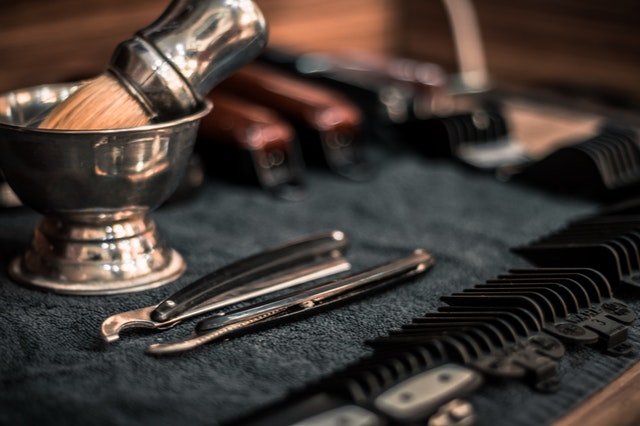All products are selected by our Beard Stylish editors. If you buy something through our links as an Amazon Associate we earn from qualifying purchases.
When you’re planning some hair removal, it can be hard to know which method to use. Which option has the slowest regrowth? Is it painful? Can you use it on sensitive facial skin?
Take a look at the most common methods of hair removal and discover which one will work for you.
Common methods of removing facial hair:
- Shaving
- Tweezing
- Epilation
- Depilatories
- Electrolysis
- Laser Treatment
There are lots of way to get rid of your facial hair, and no matter what your individual needs are, there will be something to suit you.
Read on for more information about each method…
Ways to remove facial hair
Shaving
Shaving is the easiest and fastest way to remove facial hair. You can do this yourself using either the manual shaver or electric shaver.
However, the result only last just few days. You also have to deal with ingrown hair.
To get the best results with shaving, clean your face and apply shaving cream before shaving.
Tweezing
Tweezing is removing facial hair with the aid of tweezers. Tweezing works by using tweezers to pluck or pull the hair from the roots.
This is also a temporal method, but it lasts longer than shaving. Tweezing can last up to three or eight weeks. However, tweezing can cause minor discomfort and it can be a little painful. Tweezing can also cause ingrown hairs.
To ease discomfort with tweezing, take a hot shower or wipe your face with a warm cloth. This will help relax and soften the skin.
Do not apply a warm treatment after tweezing instead, use a cold compress to reduce inflammation and redness. If you think you can’t do it yourself, visit a dermatologist.
Epilation
Epilation is like tweezing, but epilation is more efficient because it pulls multiple hairs simultaneously. More so, facial hair removes through epilation takes longer time before it grows back. Epilation works by using an epilator to remove multiple hairs mechanically at once from the root.
This method is ideal for people that do not have the time to shave or tweeze regularly.
Epilation can be painful. To ease the pain, try to exfoliate and soften your skin. Slowly glide the epilator to reduce pain and apply cold compress to reduce inflammation and swelling.
Depilatories
Depilatories are available in cream, lotion and gel. Depilatories contains compound such as barium sulfide and sodium that can dissolve unwanted facial hair. The result of applying depilatories lasts longer than shaving and these depilatories are cheap.
Before you apply the cream on your facial hair, apply on a small area and wait for 24 hours to see if there is any reaction. The reaction includes bumps, skin redness, and itchiness. If you notice any reaction, use another depilatory.
Electrolysis
This is the method approve by FDA to remove facial hair permanently, and it works on any type of hair. This method uses short radio waves or electric current to damage the hair follicles. It is expensive and time consuming because it requires multiple treatments to get the best result.
It is best handled by a professional. Although there are electrolysis home kits, they are not safe and effective.
Laser treatment
Just like the electrolysis method, laser treatment too can remove the facial hair permanently, but it may require several treatments to destroy the hair follicle finally.
The laser treatment for facial hair removal works by focusing beam of light into the melanin (pigment) in the hair. The light travels down to the hair follicle, and the heat from the laser light destroys the hair follicle and prevents it from growing.
There are safe and effective home laser kits you can use at home to remove unwanted facial hair.
Facial hair removal methods vary. Methods such as shaving and tweezing provide short-term results. Epilation, electrolysis and laser treatment give long-term results. Multiple treatment electrolysis or laser treatment can destroy the hair follicle, thus prevent facial hair from growing.
